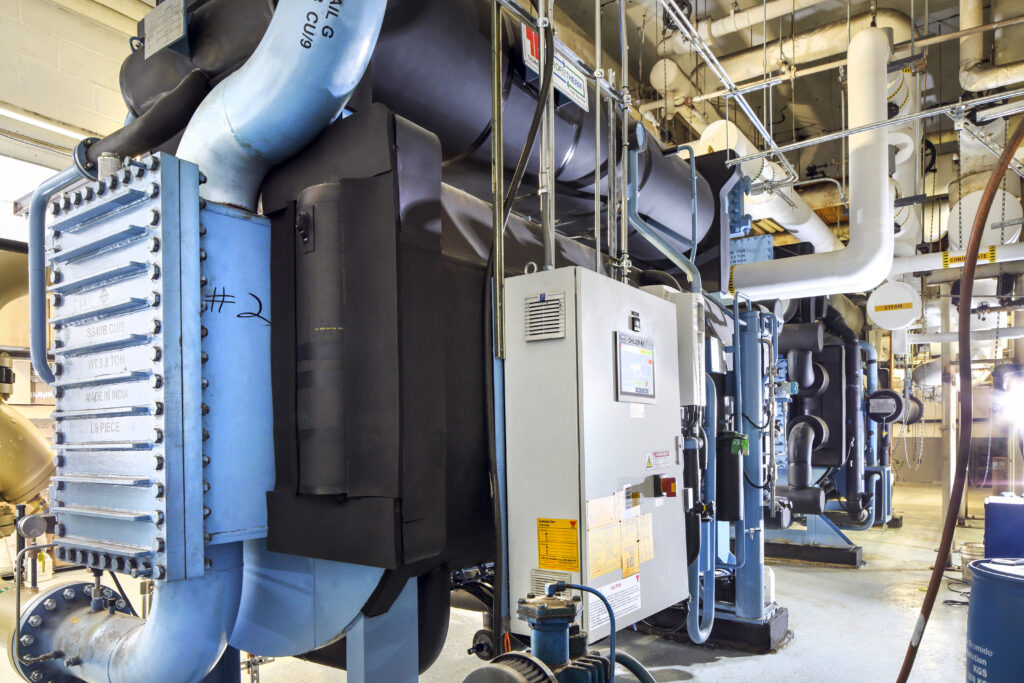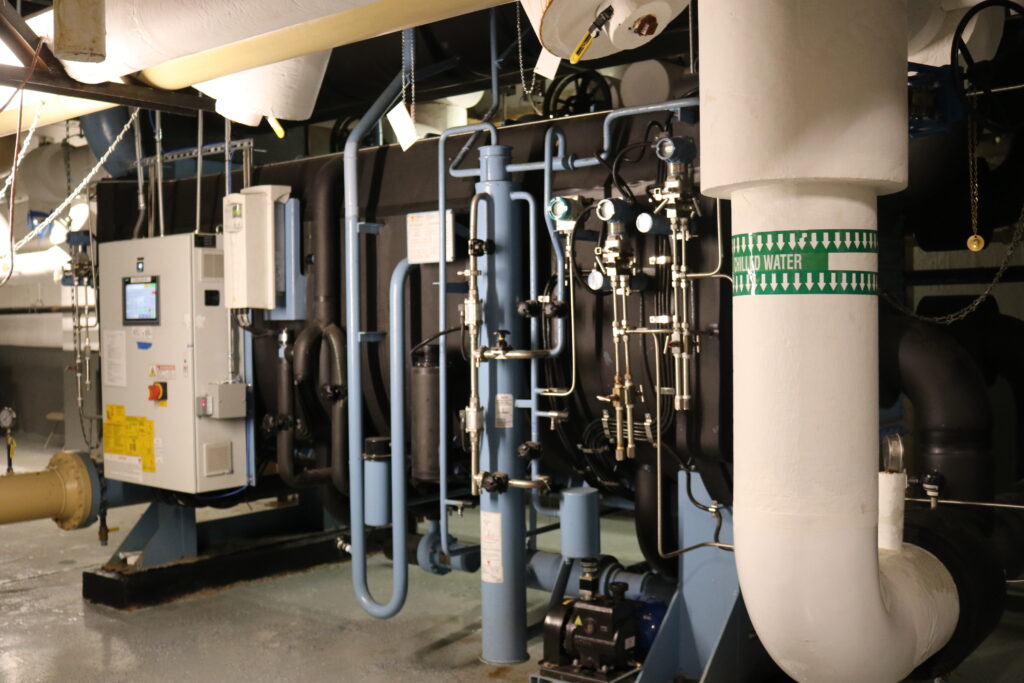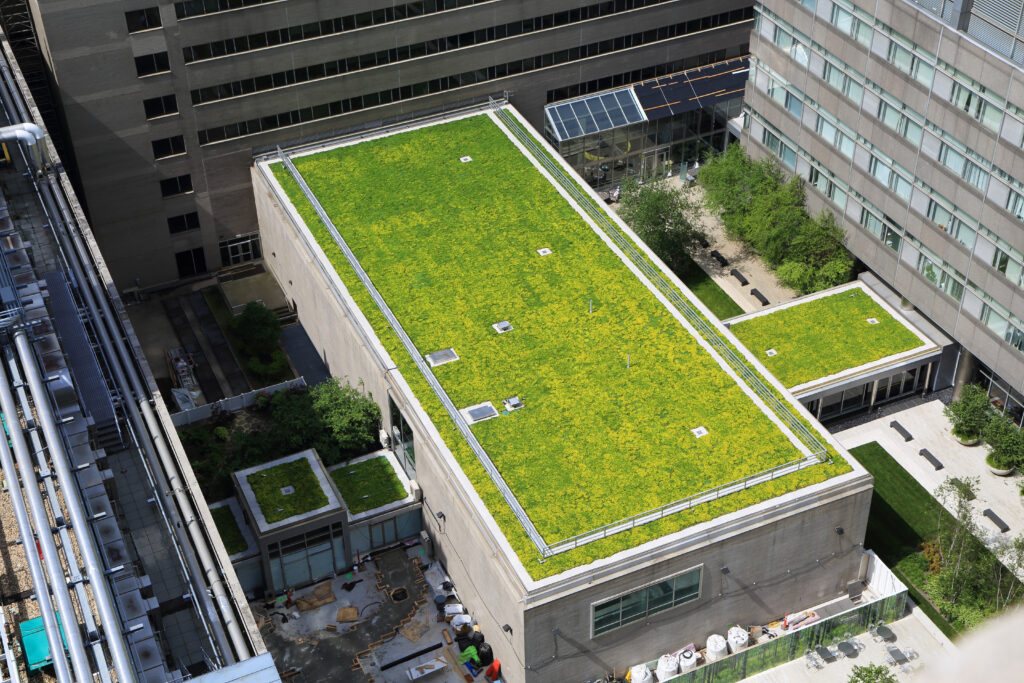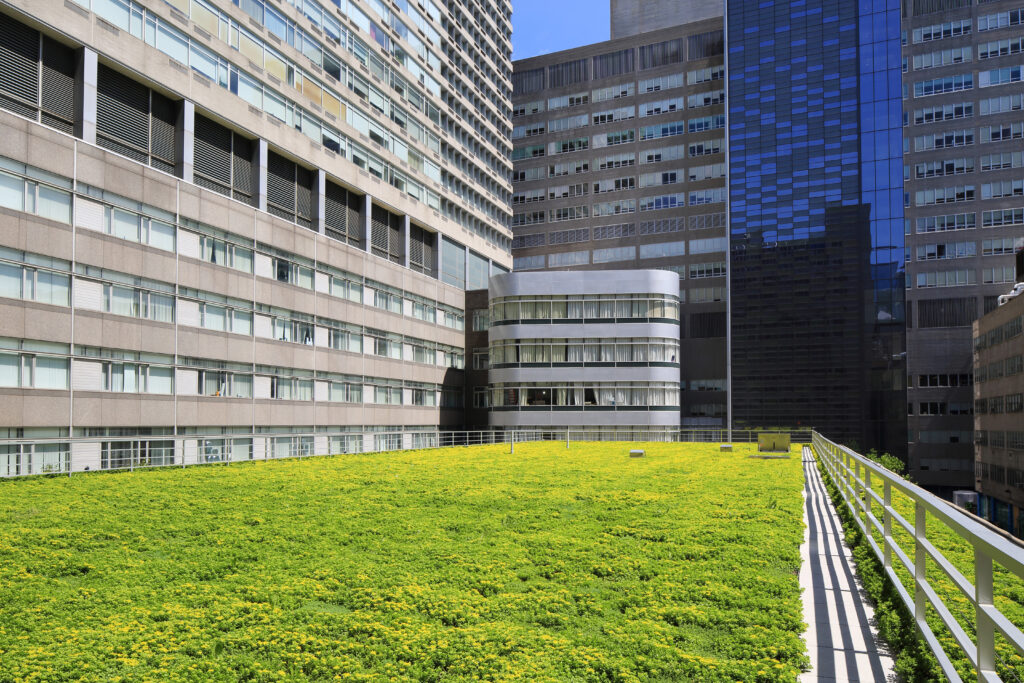Local Law 97 FAQs
September 6, 2024
Local Law 97 has sparked numerous questions, reflecting its complexity and significance. To help you navigate this important regulation, we’ve compiled answers from our in-house experts to address the most common inquiries we receive. Our goal is to help you better understand how to plan and prepare your building for the necessary deadlines, setting you up for success.
As a reminder, the first 2024 emissions report is due on May 1, 2025. It’s crucial to begin your preparations now to ensure compliance with Local Law 97’s requirements.

- What should the owner of a newly constructed building do? How about buildings still under construction? Newly constructed buildings may comply with the initial LL97 cycles if built to meet current energy codes. Compliance reporting is due every May 1, starting in 2025. For buildings still under construction, it depends on the stage of construction and whether any design adjustments are feasible. New Construction Commissioning, ideally above NYC Energy Code requirements, is recommended.
- How does LL97 interact with zoning requirements, such as those in the Midtown special district, which require energy-intensive signage? For situations like this, it’s advisable to retain an LL97 consultant like HLZAE to explore advocacy efforts and submit a carve-out request to the Department of Buildings (DOB) on your behalf.
- Is New York State on track to achieve a carbon-free grid by 2040? NYSERDA provides extensive resources on this topic, including the “Story of Our Grid” section, which offers valuable insights into progress and future plans.
- How realistic is it to achieve net-zero by 2050? Could laws change to reflect more achievable goals, especially if NYC can’t supply enough electricity? The outcome remains uncertain, but new technologies are constantly emerging that could make full electrification more feasible. If the utility falls short in meeting demand, a case can be made for an adjustment, provided the building has made efforts to comply.
- Is Con Edison prepared to meet the increased local electrical demand? This is a question best directed to Con Edison. However, they are obligated to serve their customers. After a formal request for additional power, it can be determined if adjustments to LL97 emissions are needed based on Con Edison’s capacity to supply the required power for electrification.
- My building is only 20 years old and was compliant with all codes at the time. Now we have an F grade. Why should we face penalties if we followed the rules? An ‘F’ grade indicates non-compliance with the benchmarking requirements of LL84, not necessarily a fault of the building itself. HLZAE can assist with LL84 compliance and help you understand your standing concerning future LL97 penalties.

- Will parking structures require a solar canopy over the entire roof level to comply? For your specific property, consulting with an LL97 expert like HLZAE is recommended to assess the potential benefits of installing solar panels on your parking canopy in the future.
- What’s the backup plan for older buildings if NYC isn’t ready for all of the building stock to switch to the electric grid, and how can we avoid penalties? If all options are exhausted and the grid cannot accommodate, your registered design professional should file for an adjustment under the “Good Faith Effort” clause to reduce or eliminate fines.
- Could new equipment or solutions be developed by 2030 or 2035 to address carbon emissions? Might costs decrease as more buildings implement them? While construction costs generally rise, new technologies may emerge that offer less intrusive and more cost-effective solutions for building owners.
- What impact might recent cancellations related to the greening of the grid have? This could affect the overall renewable energy portion of the NYC grid and potentially the fuel GHG factor for future compliance periods starting in 2035, though the full impact remains to be determined.
- Do you perform blower door tests? HLZAE does not conduct blower door tests in-house, but we partner with service providers who do. We ensure that the testing meets standards, report the findings, and provide additional energy assessments alongside the air leakage testing.
- What recommendations do you give clients with energy-intensive exterior signage? For such cases, retaining an LL97 consultant like HLZAE to explore advocacy and submit a carve-out request to the DOB is recommended.
- How does the 2024 baseline work for a building under construction, that has been vacant for years, and won’t be fully occupied for another two years? LL97 doesn’t require a baseline energy use for compliance unless there are special circumstances. Compliance will be based on metered and delivered energy for the calendar year 2024.

- How can we fully upgrade a building with residents still living there? HLZAE specializes in managing engineering and construction projects in occupied buildings. While disruptions are inevitable, a skilled registered design professional can outline the expected disruptions and strategies to minimize the impact on residents.
- Should MEP upgrades be completed before or after an envelope project? Will exterior updates reduce the cost of MEP equipment replacement? Best practice is to first seal and insulate the facade, windows, and roof before sizing or specifying MEP upgrades. However, if this phasing isn’t feasible, consulting a registered design professional to evaluate the best approach for your building is recommended.
- Are there any financial incentives or rebates available for property owners who want an engineering assessment of their property? Yes, NYSERDA offers the FlexTech program for cost-sharing engineering studies, and Con Edison offers cost-sharing for GeoThermal testing. However, the effectiveness of these programs can vary, and a knowledgeable service provider can help determine which is best for your building.
- What if I’ve already completed a compliance report but haven’t filed it with the DOB? The compliance report must be filed with the DOB by a registered design professional. HLZAE can handle the filing, even if we did not prepare the initial report.
- Will there be adjustments from the DOB for zoning requirements that necessitate energy-intensive signage? In these cases, it’s recommended to work with an LL97 consultant like HLZAE to explore advocacy options and submit a carve-out request to the DOB.
- We’re considering installing mini-split (electric) HVAC systems in all apartments to comply with LL97 and improve resident comfort, but the NYC Landmarks Commission doesn’t allow units on the façade. What should we do? A service provider can help you approach the NYC Landmarks Commission to clarify what will be permitted. If compliance is deemed impossible by the Commission, an adjustment request for this special circumstance should be filed.
- What could happen if fossil fuel reduction incentives are eliminated by federal policies? Would LL97 compliance become more costly? If incentives or rebates are eliminated, compliance costs for building owners would likely rise. While it’s difficult to predict, we don’t anticipate these incentives being removed in the current policy environment.

If you have any further questions or need additional support, please don’t hesitate to contact us. Our experts are here to help you ensure your building’s compliance and success with Local Law 97.
Recommended Articles
Sorry, we couldn't find any posts. Please try a different search.